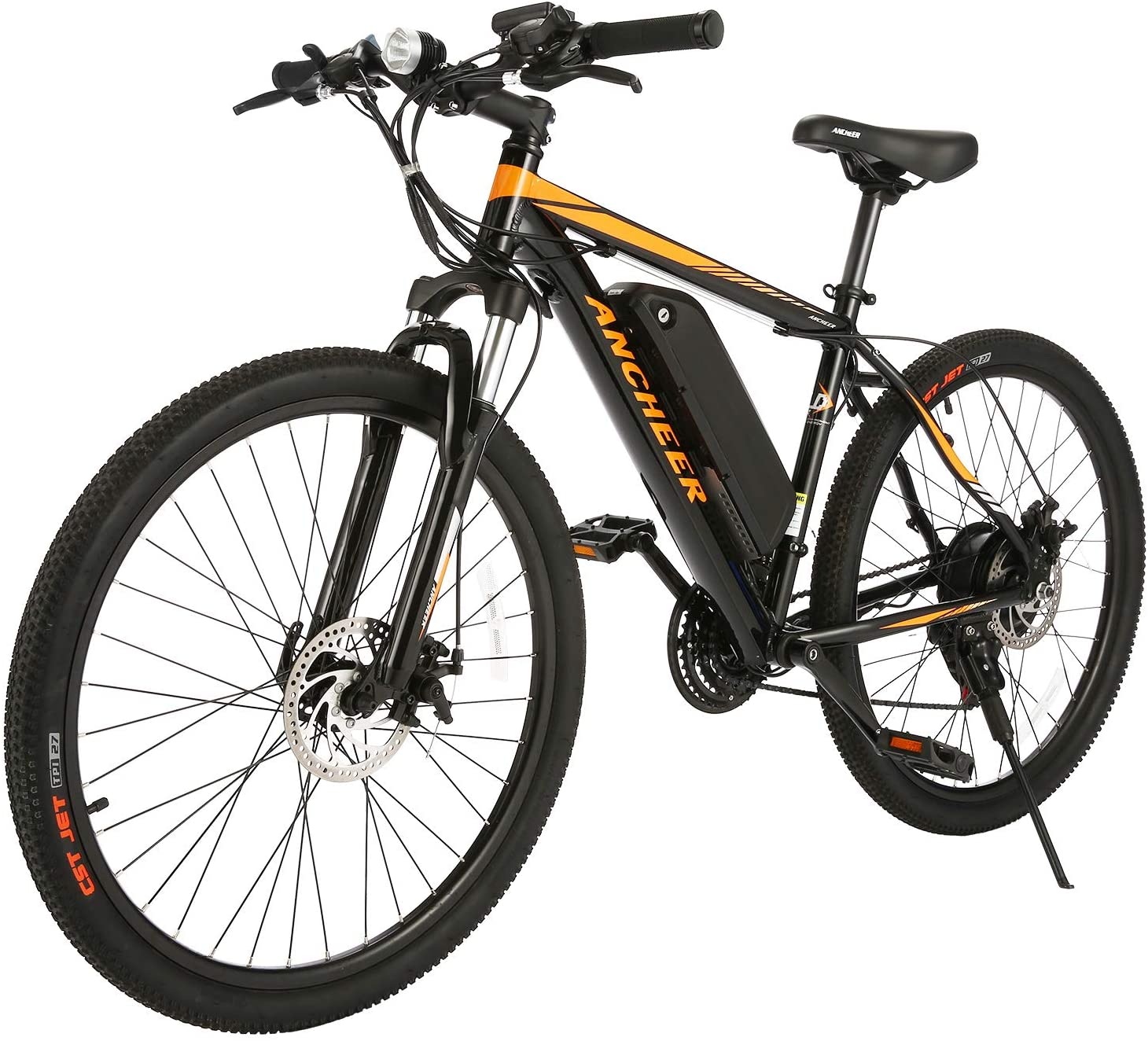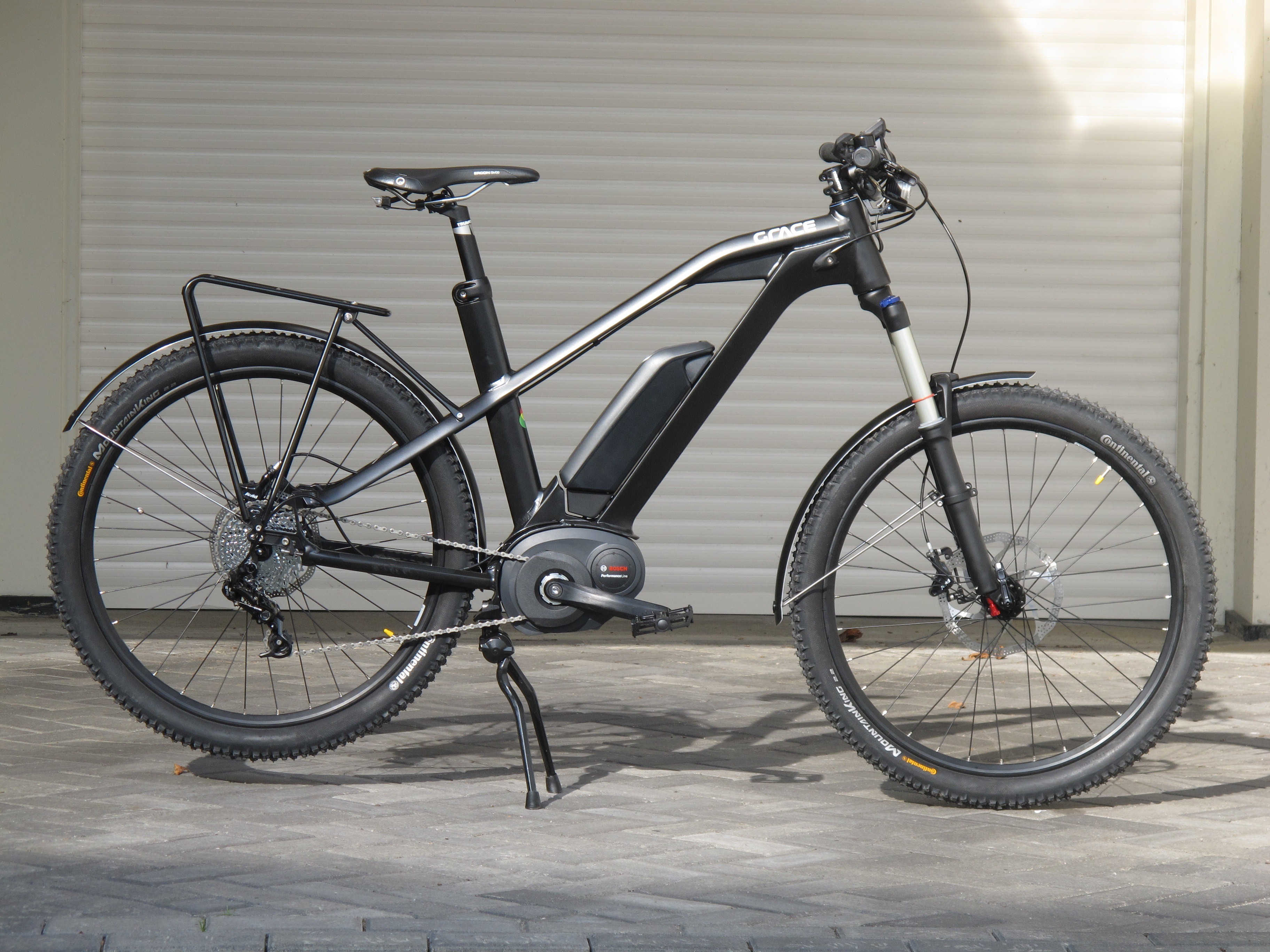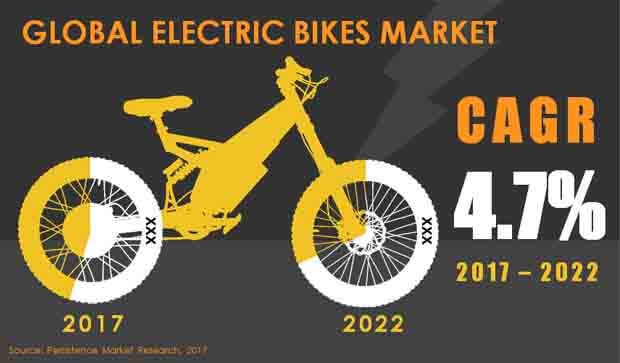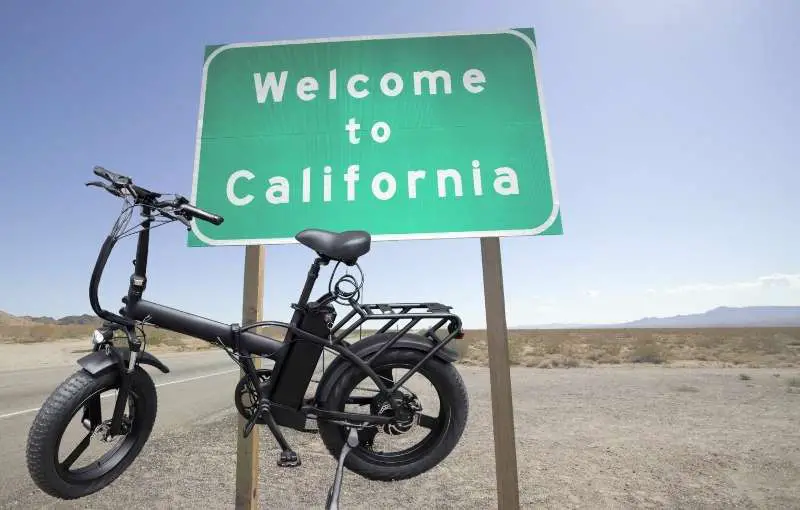Unveiling the World of Electric Bicycles: An Overview
Electric bicycles, also known as e-bikes, have gained significant popularity in recent years, transforming the way we commute and explore the outdoors. These innovative vehicles combine the classic design of traditional bicycles with the power of an integrated electric motor, offering numerous advantages over their manual counterparts. By providing increased range, speed, and accessibility for riders of varying fitness levels, electric bicycles are revolutionizing the cycling experience.
At the heart of every electric bicycle lies the electric motor, which can be classified into two main categories: hub motors and mid-drive motors. Hub motors are typically located in the front or rear wheel, while mid-drive motors are integrated into the bike’s bottom bracket, close to the pedals. Each type offers distinct advantages, with hub motors excelling in simplicity and affordability, and mid-drive motors providing better weight distribution and improved pedal assist.
Battery life and range are crucial factors to consider when selecting the best electric bicycle on the market. Most e-bikes use lithium-ion batteries, which offer a balance of power, weight, and cost. Battery capacity is usually measured in amp-hours (Ah), with higher values translating to longer ranges. However, factors such as rider weight, terrain, and assist level can significantly impact the actual range, making it essential to choose a bike with a battery capacity that meets your specific needs.
Additionally, the frame materials, braking systems, and price range should be carefully evaluated when choosing the ideal electric bicycle. Carbon fiber, aluminum, and steel are common materials used in e-bike frames, each with its unique blend of strength, weight, and cost. High-quality braking systems, such as hydraulic disc brakes, are essential for ensuring safety and control, particularly when riding at higher speeds. Finally, it’s crucial to establish a budget and consider the value offered by each electric bicycle, balancing performance, features, and cost to find the perfect match for your preferences and requirements.
How to Choose the Best Electric Bicycle: A Comprehensive Checklist
Selecting the perfect electric bicycle for your needs and preferences involves careful consideration of several essential factors. By following this comprehensive checklist, you can ensure that your chosen e-bike meets your requirements and provides a safe, enjoyable, and efficient riding experience.
First and foremost, you should consider the motor type when choosing the best electric bicycle on the market. As mentioned in the previous section, electric motors can be classified into two main categories: hub motors and mid-drive motors. Assess your personal preferences, budget, and riding style to determine which type is most suitable for you. For instance, if you value simplicity and affordability, a hub motor might be the ideal choice. Conversely, if you prioritize better weight distribution and improved pedal assist, a mid-drive motor could be more appropriate.
Next, pay close attention to the battery life and range of the electric bicycle. The battery capacity, usually measured in amp-hours (Ah), significantly impacts the range and overall performance of the e-bike. Consider factors such as rider weight, terrain, and assist level when evaluating the battery capacity required to meet your specific needs. Additionally, consider the charging time and the battery’s lifespan to ensure that your electric bicycle remains a reliable and convenient transportation option.
The frame materials, braking systems, and price range are also crucial factors to consider when selecting the best electric bicycle on the market. High-quality frame materials, such as carbon fiber, aluminum, or steel, offer a balance of strength, weight, and cost. Meanwhile, reliable braking systems, such as hydraulic disc brakes, are essential for ensuring safety and control. Finally, establish a budget and consider the value offered by each electric bicycle, balancing performance, features, and cost to find the perfect match for your preferences and requirements.
By carefully evaluating these factors and considering your personal needs and preferences, you can confidently choose the best electric bicycle on the market, ensuring a satisfying and rewarding riding experience.
Top Electric Bicycle Models: A Closer Look
With a vast array of electric bicycles available on the market, it can be challenging to identify the best electric bicycle for your unique needs and preferences. To help simplify the decision-making process, we’ve curated a selection of top electric bicycle models, each offering unique features, advantages, and potential drawbacks. This list includes a mix of models catering to different budgets, riding styles, and performance requirements.
1. The High-Performance Pick: A Best Electric Bicycle on the Market
Our high-performance pick, the Brand X SuperCharger, boasts a powerful mid-drive motor and a long-range battery, making it an excellent choice for serious cyclists seeking speed and endurance. The SuperCharger’s advanced torque sensor technology ensures a smooth and responsive riding experience, while the robust suspension system provides unparalleled comfort on various terrains. However, this high-performance electric bicycle comes with a premium price tag, which may be prohibitive for budget-conscious riders.
2. The Affordable Option: A Top Electric Bicycle for Budget-Conscious Consumers
For those seeking a more affordable electric bicycle without compromising on quality, consider the Brand Y EcoGlide. This budget-friendly model features a reliable hub motor, providing ample power for daily commutes and leisurely rides. While the EcoGlide’s range is not as extensive as that of higher-priced models, its lightweight design and affordable price make it an attractive option for budget-conscious riders. However, the EcoGlide’s braking system may not provide the same level of performance and safety as more expensive electric bicycles.
3. The Versatile Choice: A Best Electric Bicycle for City Dwellers
The Brand Z UrbanCruiser is an ideal electric bicycle for city dwellers, offering a perfect blend of performance, convenience, and style. Its compact design, integrated lights, and responsive pedal-assist system make it an excellent choice for navigating urban environments. Additionally, the UrbanCruiser features a removable battery, allowing for easy charging at home or in the office. However, this versatile electric bicycle may not excel in high-speed or off-road scenarios, catering primarily to city riders.
By examining these top electric bicycle models, you can gain a better understanding of the diverse options available on the market. Carefully consider your unique needs, preferences, and budget to determine the best electric bicycle for your lifestyle.
The Future of Electric Bicycles: Innovations and Trends
The electric bicycle market is constantly evolving, with new innovations and trends emerging to enhance the overall user experience and promote the industry’s growth. By staying informed about these advancements, riders can make more informed decisions when purchasing the best electric bicycle on the market and enjoy the benefits of cutting-edge technology.
1. Smart Technology Integration
Smart technology integration is becoming increasingly prevalent in electric bicycles, offering features such as GPS tracking, fitness monitoring, and mobile app connectivity. These advanced systems enable riders to monitor their performance, navigate efficiently, and customize their riding experience, making electric bicycles even more appealing to tech-savvy consumers.
2. Lightweight Materials
Manufacturers are continually seeking ways to reduce the weight of electric bicycles without compromising their structural integrity or performance. The development and integration of lightweight materials, such as carbon fiber and advanced alloys, are expected to become more widespread in the electric bicycle market, improving efficiency, handling, and overall user experience.
3. Swappable Batteries
Swappable batteries offer a convenient solution for riders seeking to extend their range without waiting for lengthy recharge times. By allowing users to quickly replace depleted batteries with fully charged ones, this innovation enables riders to enjoy uninterrupted journeys, making electric bicycles a more practical and attractive option for long-distance commuters and adventurers alike.
4. Folding Electric Bicycles
Folding electric bicycles are an excellent option for urban commuters and travelers, providing a compact and portable solution for navigating congested cities and tight spaces. As the demand for space-efficient transportation grows, so too will the popularity of folding electric bicycles, offering riders a convenient and eco-friendly alternative to cars and public transportation.
By embracing these innovations and trends, the electric bicycle market is poised for continued growth and evolution. Stay informed about these advancements to ensure that you’re riding the best electric bicycle on the market, tailored to your unique needs and preferences.
Electric Bicycle Maintenance: Ensuring Long-Term Performance
Proper maintenance is crucial for ensuring the long-term performance, safety, and longevity of your electric bicycle. By following a few simple guidelines and caring for your bike’s components, you can enjoy a smooth and trouble-free riding experience for years to come. Here are some essential tips and recommendations for maintaining the best electric bicycle on the market.
1. Battery Care
An electric bicycle’s battery is one of its most critical components, requiring proper care and maintenance to ensure optimal performance and lifespan. Follow these guidelines to maintain your battery:
- Charge your battery regularly, even if you don’t use your electric bicycle frequently. This practice helps maintain the battery’s health and capacity.
- Avoid exposing your battery to extreme temperatures, as this can negatively impact its performance and lifespan.
- Store your electric bicycle in a cool, dry place, and keep the battery at around 50% charge when storing it for extended periods.
2. Regular Inspections
Regularly inspect your electric bicycle to identify any potential issues before they become significant problems. Check the following components during your inspections:
- Tires: Ensure proper inflation and inspect for wear or damage.
- Brakes: Test the brakes to ensure they’re functioning correctly, and inspect the brake pads for wear.
- Chain and gears: Lubricate the chain and inspect the gears for signs of wear or damage.
- Lights and electronics: Ensure all lights and electronic components are functioning correctly.
3. Component Replacement
Over time, certain components on your electric bicycle will wear out and require replacement. Regularly inspect and replace the following parts as needed:
- Tires: Replace tires when they show signs of significant wear or damage.
- Brakes: Replace brake pads when they wear down to the minimum recommended thickness.
- Chain and cassette: Replace the chain and cassette when they become excessively worn or stretched.
- Battery: Replace the battery when it no longer holds a charge or provides adequate range.
By following these maintenance guidelines, you can help ensure that your electric bicycle remains in top condition, providing you with a safe, enjoyable, and efficient riding experience for years to come. Remember, investing time in proper maintenance is crucial for preserving the performance, longevity, and safety of the best electric bicycle on the market.
Environmental Considerations: Electric Bicycles and Sustainable Transportation
As environmental concerns continue to grow, consumers are increasingly seeking eco-friendly transportation alternatives. Electric bicycles, as a sustainable transportation option, offer numerous benefits for both the environment and riders. By understanding the ecological footprint of electric bicycles compared to cars and traditional bicycles, you can make informed decisions when purchasing the best electric bicycle on the market and contribute to reducing traffic congestion and promoting healthier, more livable cities.
1. Electric Bicycles vs. Cars
Compared to cars, electric bicycles are significantly more energy-efficient and produce fewer greenhouse gas emissions. According to the U.S. Department of Energy, the average electric bicycle uses about 1 kilowatt-hour (kWh) of electricity per 100 miles, while the average car consumes approximately 33.7 kWh per 100 miles. Furthermore, electric bicycles emit no tailpipe emissions, reducing air pollution and contributing to cleaner urban environments.
2. Electric Bicycles vs. Traditional Bicycles
While traditional bicycles are also an environmentally friendly transportation option, electric bicycles offer several advantages for riders, particularly those with mobility limitations or longer commutes. Electric bicycles enable riders to cover greater distances with less effort, making them an attractive alternative for those who might otherwise rely on cars for daily transportation. Additionally, electric bicycles can help riders avoid the sweating and fatigue associated with longer rides on traditional bicycles, ensuring a more comfortable and enjoyable commuting experience.
3. Reducing Traffic Congestion
By encouraging more people to choose electric bicycles for short- to medium-distance commuting, cities can reduce traffic congestion and improve overall transportation efficiency. Electric bicycles require less space than cars, both on the road and in parking areas, allowing for better land use and reduced infrastructure costs. Furthermore, electric bicycles can help alleviate the strain on public transportation systems, particularly during peak travel times, by providing a convenient and eco-friendly alternative for commuters.
4. Promoting Healthier, More Livable Cities
The widespread adoption of electric bicycles can contribute to healthier, more livable cities by reducing air pollution, noise pollution, and traffic congestion. By promoting active transportation, electric bicycles can also encourage a more physically active population, leading to improved public health and well-being. Moreover, electric bicycles require less infrastructure investment than cars, freeing up resources for other community-focused projects and initiatives.
By choosing the best electric bicycle on the market, you can contribute to a more sustainable future and enjoy the numerous benefits of this eco-friendly transportation option. Embrace the potential of electric bicycles to reduce your carbon footprint, improve your health, and enhance your daily commuting experience.
Electric Bicycle Laws and Regulations: Navigating the Legal Landscape
Navigating the legal landscape of electric bicycles can be challenging, as local, regional, and national regulations vary. Understanding the rules and requirements governing electric bicycles is crucial for riders to make informed decisions when purchasing and riding their electric bicycles. This section will provide an overview of the legal framework governing electric bicycles and address common concerns such as speed limits, age restrictions, and insurance requirements.
1. Classification of Electric Bicycles
Electric bicycles are typically classified into three categories based on their motor power and top speed:
- Class 1: Pedal-assist electric bicycles with a motor that assists up to 20 mph.
- Class 2: Throttle-assist electric bicycles with a motor that can propel the bike without pedaling, up to 20 mph.
- Class 3: Speed pedelec electric bicycles with a motor that assists up to 28 mph.
Classification can impact regulations, such as speed limits, age restrictions, and where electric bicycles are allowed to operate. Be sure to familiarize yourself with the classifications in your area to ensure compliance with local laws.
2. Speed Limits
Speed limits for electric bicycles vary by jurisdiction. In many places, Class 1 and Class 2 electric bicycles are allowed to operate on bicycle paths and lanes, while Class 3 electric bicycles may be restricted to roads and bike lanes on roads. Always check local regulations to determine the speed limits for electric bicycles in your area.
3. Age Restrictions
Age restrictions for electric bicycles also vary. Some jurisdictions require riders to be at least 14 or 16 years old to operate a motorized bicycle, while others have no age restrictions for electric bicycles. Ensure that you and any riders meet the age requirements in your area before operating an electric bicycle.
4. Insurance Requirements
Insurance requirements for electric bicycles are generally less stringent than those for motor vehicles. However, some homeowner’s or renter’s insurance policies may cover electric bicycles, and additional coverage may be available through bicycle-specific insurance providers. Consider reviewing your insurance policy or exploring additional coverage options to protect yourself and your electric bicycle.
By understanding the legal landscape governing electric bicycles, you can make informed decisions when purchasing and riding the best electric bicycle on the market. Always prioritize safety, comply with local regulations, and stay informed about any changes to the laws in your area.
Joining the Electric Bicycle Community: Finding Support and Resources
Connecting with fellow electric bicycle enthusiasts can significantly enhance your riding experience, providing opportunities to share experiences, learn from others, and access the latest news and updates in the electric bicycle world. This section will introduce you to various online forums, clubs, and resources where you can engage with the vibrant electric bicycle community.
1. Online Forums
Online forums are an excellent resource for connecting with electric bicycle enthusiasts from around the world. Websites such as Electric Bike Review Forum and Endless Sphere offer discussion boards where riders can ask questions, share experiences, and learn from one another. These forums often cover a wide range of topics, from selecting the best electric bicycle on the market to troubleshooting and maintenance tips.
2. Social Media Groups
Social media platforms, such as Facebook, Twitter, and Instagram, host numerous groups and accounts dedicated to electric bicycles. Joining these groups allows you to connect with like-minded individuals, participate in discussions, and access a wealth of resources and information. Many social media groups also organize local rides and events, providing opportunities to meet fellow riders in person.
3. Clubs and Organizations
Local electric bicycle clubs and organizations often host group rides, workshops, and other events, allowing you to meet fellow riders and engage in the electric bicycle community. To find clubs in your area, try searching online or contacting local bike shops that specialize in electric bicycles. Some well-known electric bicycle organizations include the PeopleForBikes Coalition and the European Bicycle Manufacturers Association.
4. Magazines and Websites
Numerous magazines and websites cover the electric bicycle market, providing news, reviews, and resources for riders. Publications such as Electric Bike Action and Bike EU offer in-depth articles, product reviews, and industry insights, helping you stay informed about the latest trends and developments in the electric bicycle world.
By engaging with the electric bicycle community, you can enrich your riding experience, learn from others, and access valuable resources. Don’t hesitate to reach out and connect with fellow riders, as the electric bicycle community is known for its welcoming and supportive nature.








